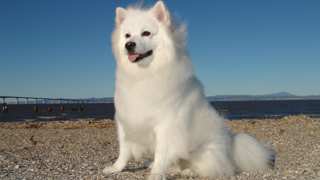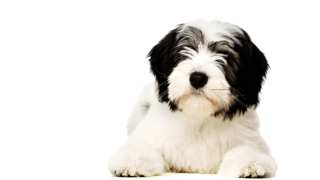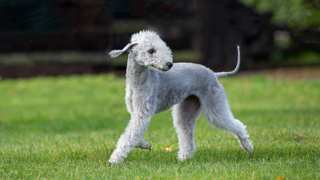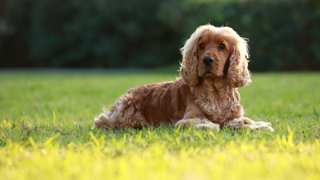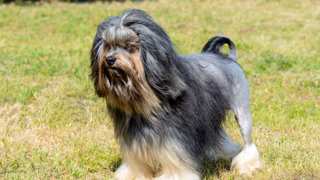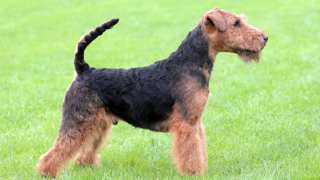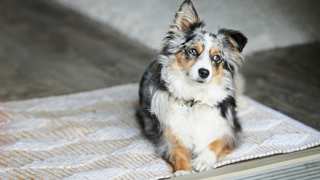Tibetan Terriers, like other breeds with long, hanging coats, tend to develop mats and tangles in their fur quite easily; hence Tibetan Terrier grooming needs to be an almost daily habit. They will need brushing (described in more detail in the "Brushing" section) nearly every day, baths every 3-4 weeks, and, depending on the owner's preferred hairstyle, clipping or scissoring once every 3 months or so.
When bathing your TT, using a clean outdoor space is best; a kiddie pool is ideal. Give the dog a quick brush-through beforehand (as you'll brush more thoroughly afterward), then use a hose (or a large cup, if using an indoor tub) to wet the TT's coat. Use canine shampoo and conditioner (available at pet stores) to clean the coat section by section, then towel- or blow-dry the coat. Finish with a deep, thorough brushing as described in the Brushing section.
TTs, whether with a full coat or with a sculpted hairstyle, will require a trim every 3 months or so. While a lot of people learn to cut their dog's hair at home, it's useful to visit a professional groomer at least once, as the groomer can provide useful tips on how to groom a Tibetan Terrier in general.

